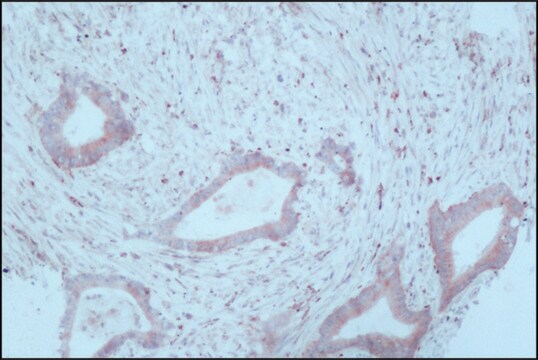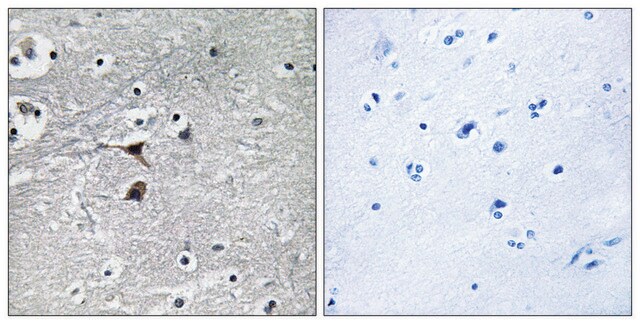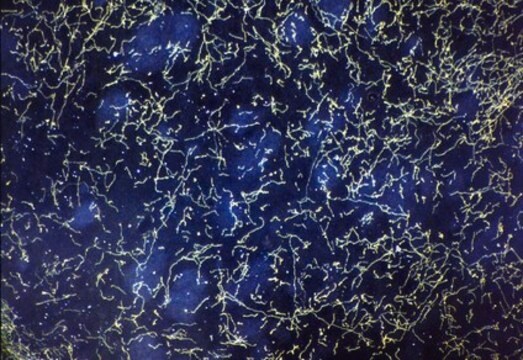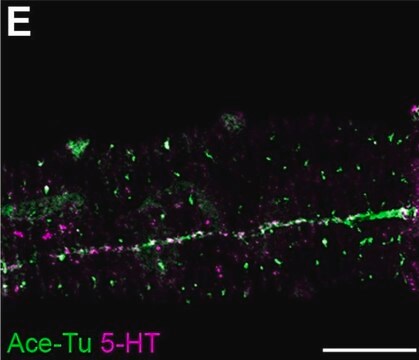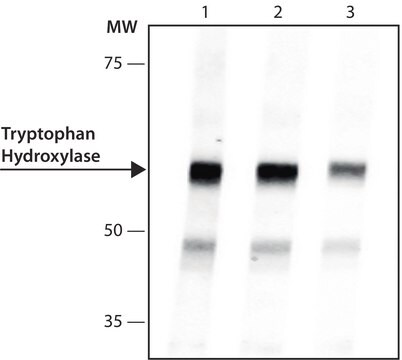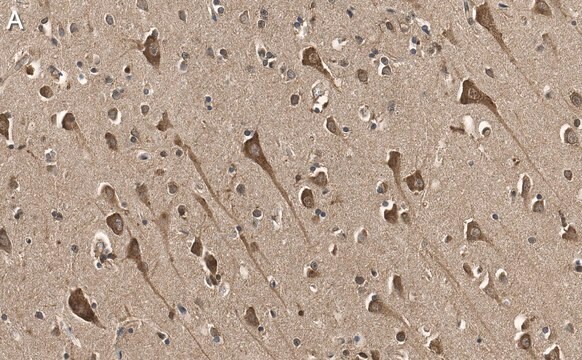AB1541
Anti-Tryptophan Hydroxylase Antibody
CHEMICON®, sheep polyclonal
Synonym(s):
Tryptophan 5-monooxygenase 1, indoleacetic acid-5-hydroxylase, tryptophan 5-hydroxylase, tryptophan 5-monooxygenase, tryptophan hydroxylase (tryptophan 5-monooxygenase), tryptophan hydroxylase 1
About This Item
Recommended Products
product name
Anti-Tryptophan Hydroxylase Antibody, Chemicon®, from sheep
biological source
sheep
Quality Level
antibody form
affinity isolated antibody
antibody product type
primary antibodies
clone
polyclonal
purified by
affinity chromatography
species reactivity
human, rat
manufacturer/tradename
Chemicon®
technique(s)
immunohistochemistry: suitable
western blot: suitable
NCBI accession no.
UniProt accession no.
shipped in
dry ice
target post-translational modification
unmodified
Gene Information
human ... TPH1(7166)
General description
Specificity
Immunogen
Application
Performed on formaldehyde fixed tissue of a previous lot. Useful for cell body but not fiber staining.
Optimal working dilutions must be determined by the end user.
Quality
Western Blot Analysis:
1:1000 dilution of this lot detected Tryptophan Hydroxylase on 10 μg of PC12 lysates.
Target description
Linkage
Physical form
Storage and Stability
Handling Recommendations: Upon receipt, and prior to removing the cap, centrifuge the vial and gently mix the solution. Aliquot into microcentrifuge tubes and store at -20°C. Avoid repeated freeze/thaw cycles, which may damage IgG and affect product performance. Note: Variability in freezer temperatures below -20°C may cause glycerol-containing solutions to become frozen during storage.
Analysis Note
Brain tissue
PC12 lysates
Other Notes
Legal Information
Not finding the right product?
Try our Product Selector Tool.
recommended
Storage Class Code
10 - Combustible liquids
WGK
WGK 2
Certificates of Analysis (COA)
Search for Certificates of Analysis (COA) by entering the products Lot/Batch Number. Lot and Batch Numbers can be found on a product’s label following the words ‘Lot’ or ‘Batch’.
Already Own This Product?
Find documentation for the products that you have recently purchased in the Document Library.
Our team of scientists has experience in all areas of research including Life Science, Material Science, Chemical Synthesis, Chromatography, Analytical and many others.
Contact Technical Service